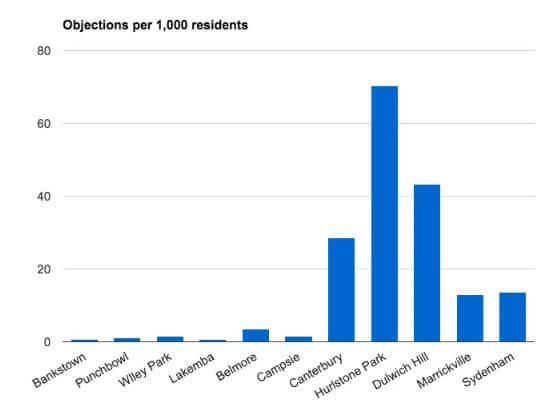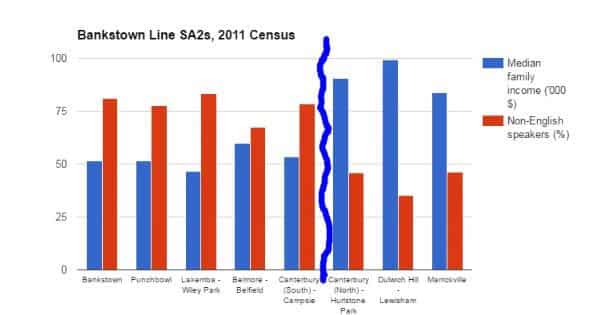As we reported on Saturday last week, NSW Premier Chris Minns has been promoting a “massive” housing push in Sydney. Yet the plan only slated seven areas of Sydney for more housing density, and three of those are already highly developed.
The previous government’s proposed rezoning around the Sydney south-west Metro shows why politicians have been so afraid to push housing density.
The south-west line, scheduled to open first quarter 2024, is part of a $60 billion rail upgrade. Along with the western line scheduled to open in 2030, the new metro system is estimated to increase Sydney’s rail capacity by 60%.
With plans for trains every 4 minutes to the city, the line presented the perfect opportunity to build Sydney “up” rather than “out.”
The SW Metro line will run through inner-west suburbs of Marrickville and Dulwich Hill before ending in the majority migrant suburbs of Lakemba, Belmore and Bankstown.
The Metro line rezoning plan had Bankstown with high-rise for 600 metres around the station and mid-rise further out. Next door, Campsie is now zoned for high-rise for 400 metres from the station and 8-storey mid-rise out to 600 metres.
In the inner-west’s Dulwich Hill, just four stops from Central station, it was to be a different story. The suburb was zoned for 5-7 storey mid-rise development within 200 metres of the station only.
In other words, the suburb closer to the city with a higher land value where more people want to live will have less housing.
The charts below show why. Suburbs with a higher median income and higher proportion of English-speaking residents filed vastly more objections.


The proposed zoning change met with further opposition from Inner West Council (currently 4 Labor, 2 Greens, 2 Independent). The rezoning was eventually dropped at the state government level and proceeded no further.
Cases like these suggest housing policy is mostly shaped by those who already own housing.
Sign Up To Our Free Newsletter